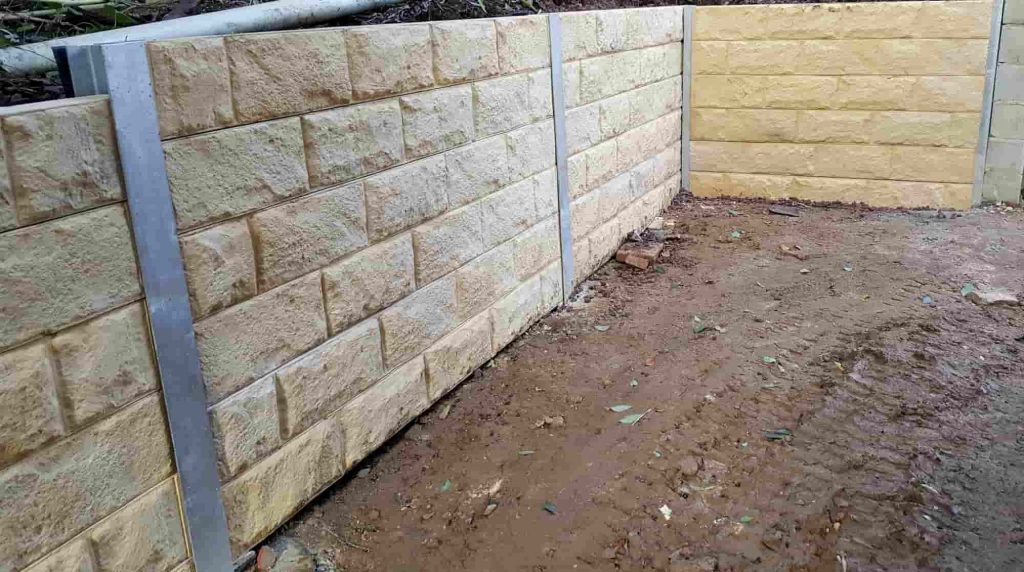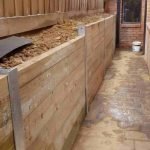Introduction
Retaining walls serve an essential function in landscaping and building, acting as barriers that hold back soil and handle water runoff. Whether you're wanting to develop a stunning garden, prevent disintegration, or improve the aesthetic appeal of your residential or commercial property, understanding the subtleties of retaining wall setup is necessary. In this detailed guide, entitled Retaining Walls Made Easy: Tips from Leading Installers Near You, we'll check out numerous aspects of maintaining walls-- from selecting the best products to employing the best professionals. By the end of this short article, you'll be equipped with all the understanding essential to make informed choices about your retaining wall project.
Understanding Maintaining Walls
What is a Keeping Wall?
A retaining wall is a structure developed to limit soil to unnatural slopes. These walls are used in landscaping for different factors, including developing level locations on sloped residential or commercial properties and avoiding soil erosion.

Types of Maintaining Walls
Timber Sleeper Retaining Wall: This option is both attractive and economical, making it a popular choice for homeowners. Concrete Sleeper Retaining Wall: Long lasting and durable versus weather components, concrete sleepers are ideal for numerous applications. Brick Keeping Wall: A timeless choice that offers classic beauty while providing structural integrity. Stone Retaining Wall: Known for their natural look and strength, stone walls can blend flawlessly into natural landscapes.Benefits of Installing Retaining Walls
Erosion Control
One of the main advantages of having a retaining wall is its capability to control disintegration efficiently. By keeping back soil, these structures can prevent landslides and supply stability in locations prone to heavy rainfalls.
Enhanced Aesthetic Appeal
Retaining walls can considerably enhance your landscape's visual appeal. From magnificently crafted stone walls to modern concrete designs, there's a style ideal for each home.
Increased Functional Space
By leveling sloped areas of your home, maintaining walls produce additional usable area for gardens or outdoor patios, maximizing your outdoor area.
Choosing the Right Material for Your Project
Factors to Consider When Picking Materials
- Climate: Different products perform much better in differing climates. Budget: Identify just how much you're willing to invest in materials. Aesthetic Preference: Pick products that line up with your general style vision.
Comparison Table of Product Types
|Product Type|Cost|Resilience|Aesthetic Value|| -------------------------|-------------|------------|------------------|| Timber Sleeper|Low|Moderate|High|| Concrete Sleeper|Medium|High|Medium|| Brick|Medium|High|Extremely High|| Stone|High|Really High|Extremely High|
The Importance of Working with a Qualified Contractor
Why You Must Hire a Professional Installer?
Hiring a knowledgeable retaining wall contractor ensures that your task sticks to local regulations and satisfies safety requirements. Experts bring know-how that aids in quality setup and longevity.
How to Pick the Right Contractor?
- Check evaluations and testimonials. Ask about their experience with comparable projects. Ensure they have appropriate licensing and insurance.
Where to Find Leading Specialists Near You?
Searching for a reliable retaining wall specialist near me can be intimidating. Here are some efficient methods:
Online Searches: Usage search engines with terms like " Retaining Wall Contractor Melbourne" Local Directory sites: Websites like Yelp or Angie's List typically have listings with client reviews. Recommendations: Ask good friends or family who have actually undertaken comparable projects.Steps Associated with Retaining Wall Installation
Site Assessment and Planning
Before beginning installation, carry out an extensive website assessment. Determine drain problems, soil type, and any existing greenery that might require removal.
Designing Your Retaining Wall
Choose in between various styles based upon functionality and looks-- guarantee it complements your residential or commercial property's style while serving its function effectively.

Excavation Work for Foundations
Proper excavation is vital for developing a steady foundation. The depth will depend on wall height; usually, deeper foundations are needed for taller walls.
Installation Methods for Different Materials
Timber Sleeper Installation Process
Mark out the location where the wall will sit. Dig trenches based on depth requirements. Lay wood sleepers horizontally in location using metal spikes or connectors.Concrete Sleeper Installation Process
Prepare the website by removing any debris. Pour concrete footings if needed-- allow sufficient curing time. Position concrete sleepers vertically or horizontally as desired.Common Mistakes to Prevent Throughout Installation
Failing to represent drain systems might cause water buildup behind the wall. Not utilizing adequate assistances can cause structural failure over time. Skipping allows-- check local guidelines before starting work!Maintenance Tips for Your Maintaining Wall
To make sure durability:
Regularly look for indications of wear such as fractures or bulges. Keep plants far from the wall-- roots can cause damage over time! Clean rain gutters regularly to avoid extreme water circulation towards the wall.Cost Estimate for Setting up a Keeping Wall
Understanding expenses assists budget plan efficiently:
- Timber sleeper walls vary from $100 - $150 per linear meter installed. Concrete sleeper walls generally cost between $200 - $300 per direct meter installed. Brick walls might start at $250 per linear meter depending on style complexity.
Frequently Asked Questions (FAQs)
1) What is the average lifespan of retaining walls?
Most maintaining walls last anywhere from 20 years approximately several years depending on material quality and upkeep practices.

2) Do I require licenses before construction?
Yes! Constantly examine regional zoning laws concerning building authorizations before beginning any work on keeping walls.
3) Can I build my own keeping wall?
While it's possible, employing professional retaining wall installers guarantees correct techniques are followed which decreases danger down Tuff Stuff Retaining Walls the line.
4) How deep must my foundation be?
Typically structures should be at least one-third the height of your prepared wall however differs based on soil conditions!
5) Are there environmentally friendly options available?
Yes! Many companies offer sustainable materials such as recycled plastic lumber or natural stones sourced responsibly!
6) What maintenance do these structures require?
Regular examinations along with cleaning particles accumulation aid extend their life expectancy significantly!
Conclusion
In summary, building a retaining wall involves careful planning-- from selecting proper materials tailored specifically towards functionality & & looks right through working with experienced retaining wall builders Comprehending these principles will not just relieve installation but likewise enhance long-term efficiency-- all while beautifying your outside area! So why wait? Start preparing today!
With this guide entitled " Retaining Walls Facilitated: Tips from Leading Installers Near You", you now have all tools at hand required when launching this exciting journey into structured landscaping!